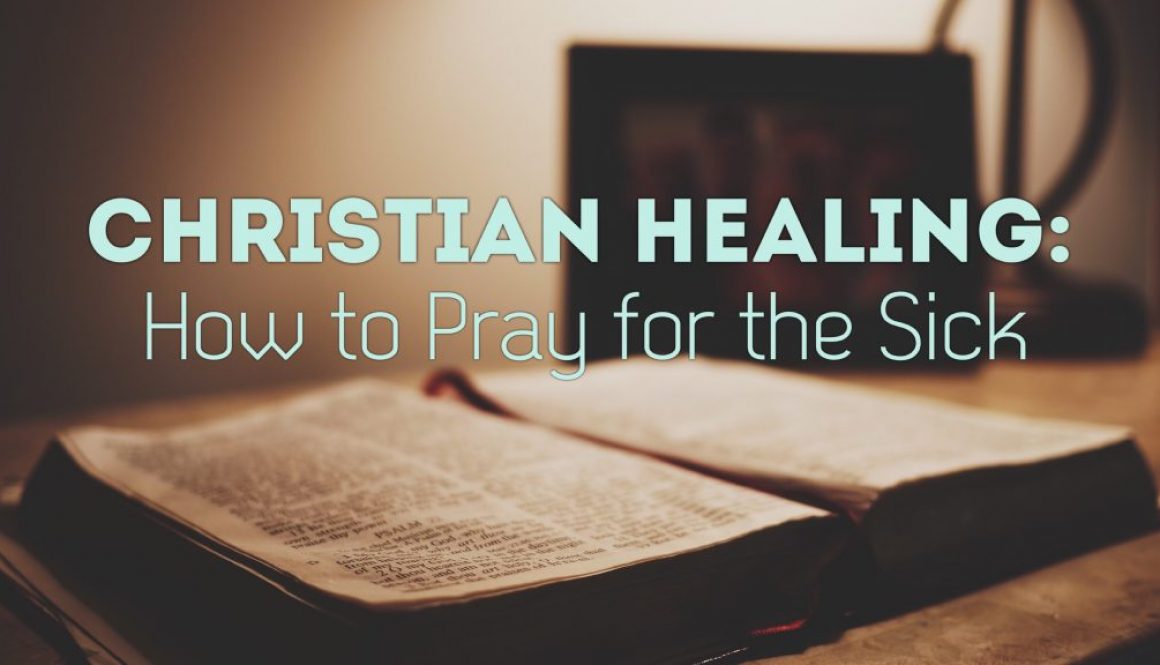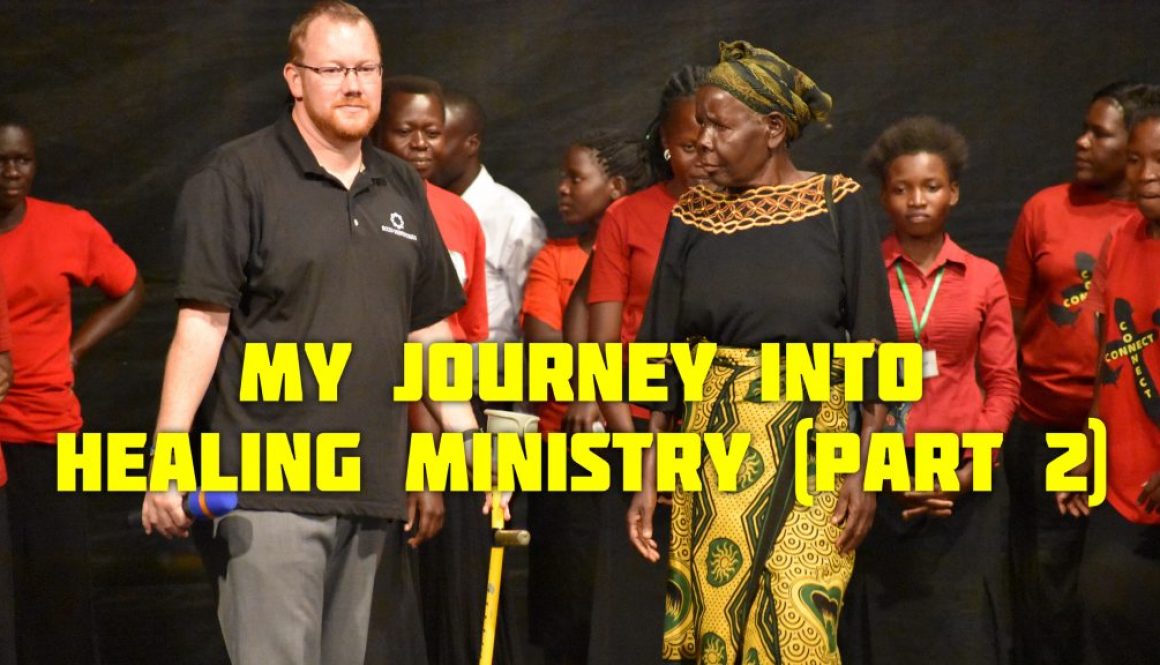How to Pray for the Sick
We have come a long way in this blog series on Christian Healing! We began with the biblical basis for healing, then discussed if healing should be expected today. We looked at the authority of all believers to heal the sick, and talked practically about “healing by command.” Shifting directions from authority to anointing, we looked at the Holy Spirit’s power for healing, and in the last post we discussed the biblical “gifts of healing.”
Now, finally, with the foundations having been laid, I hope you are ready to go after healing and begin praying for the sick, yourself! In this post, I want to share with you the most effective prayer model for healing I have ever seen. It is the one I have used when praying for the sick for almost a decade, and it is the one we teach to all of our churches and ministry partners in Sozo Ministries.
Are Prayer Models Biblical?
Before I give you the steps for praying for the sick, I first want to deal with the objection that prayer should be a spontaneous conversation with God, rather than a structured format to follow.
I do agree with that sentiment, completely. However, in the New Testament, as the disciples walked with Jesus and saw him doing public ministry, as well as observing His private life of prayer with the Father, they knew something was missing in their own prayer life. They asked Him, “teach us to pray,” at which point Jesus gave them what we now call “The Lord’s Prayer” (Luke 11:1-4).
That prayer was not intended to be used for repetitive, ritual recitations. Nor was it supposed to be a formula to get God to move on their behalf. It was simply given to them as a model to follow, as they began to pray to the Lord for themselves.
In the same way, the prayer model I will share is not a “repeat these words” kind of prayer, nor is it a “principle” to get God to do what you want. Instead, it is a method of thinking about praying for the sick, which enables a person to minister effectively.
I learned this prayer model in 2012 from Dr. Randy Clark, and it has forever changed my fruitfulness in the healing ministry.
How to Pray for the Sick
As you enter into a time of ministry to the sick, it is important to check your motivations from the outset. Although we do desire to see miracles for healing take place, our primary goal is that the person would experience the love of God working through us. It is never our goal to glorify ourselves or to “show off” with God’s power.
We must also understand that for healing to take place, we must be praying with faith that God wants to heal. We should never offer a quick prayer, saying “God, if it is your will, please heal this person.” That is not loving to the person, and it shows little faith.
Praying for the sick should be an earnest pursuit, seeking that God would touch this person and free them from the bondage of sickness and disease. These five steps will help you to do that.
Step 1: Interview
When a person was brought to Jesus for healing, He usually took time to question them, before jumping into pray. His question, often, was “what do you want me to do for you?” (see Luke 18:41).
We too must take time to interview the person needing healing, in order to find out what is going on and how they want us to pray. Begin by asking questions like:
- How can I pray for you today?
- What sicknesses or injuries do you have?
- How long have you had this issue?
- On a scale of 1-10, where is you pain level to begin with?
- What is/was the cause?
- What are the doctors telling you about this condition?
- Do you take any medications for this?
The basic goal of this step is to try and understand what they want prayer for. We must join our prayer with their desires, and not our own.
Recently I was leading a healing crusade in a rural district in Uganda. A man came forward for prayer, who was walking with a cane, and had one foot twisted sideways by polio. A chair was brought for him, and I automatically assumed that this was what he wanted prayer for, so I knelt down to place my hands on his leg. Thankfully, I caught myself and as I knelt, I asked him, “how can I pray for you today.” He told me that he has suffered greatly with constant ringing in his ears, and was going deaf in one of them. He wanted me to pray for his hearing!
It took some time, and multiple prayers, but we did see this man’s hearing healed. Afterwards I asked if he wanted prayer for his twisted leg as well. Unfortunately, he wasn’t interested at that time. The thing I wanted to pray for was not his priority.
Listening to the person, rather than jumping to conclusions, is loving them. That is our first priority in any time of prayer!
As much as you are listening to what the person has to say in the interview time, you should also be listening to the Holy Spirit for His insight into the problem. For instance, some sicknesses may have roots in spiritual issues such as sin, bitterness, unforgiveness, emotional wounds, or even the effects of a curse or a demonic affliction. The Lord may give you words of knowledge or words of wisdom in how to deal with these issues.
Step 2: Prayer Selection
When we see Jesus and the disciples pray, there are two ways that they demonstrate for us. The first is a petitioning prayer. This is when we ask the Lord to heal the person. For example, “God, right now I ask in Jesus Name, that you would take this pain from my brother…”
The second way we see Jesus and the disciples heal is through the use of command, which we have already discussed in depth. This is when, rather than petitioning God to do something, we speak to the disease or injury in the name of Jesus, and command it to leave. For example, “In the name of Jesus, I command this pain to leave…”
Dr. Clark says, “A command is appropriate as your initial step unless you are led otherwise by the Holy Spirit…” This is especially true when there has been a word of knowledge given for their specific issue.
You would also use a command when there is evidence of a demonic power causing the affliction or in breaking a curse over the person. For example, “In Jesus name, I break the curse over this person, and command this afflicting spirit to leave…”
After you have interviewed the person and discerned what the Holy Spirit is saying, you should decide which prayer to begin your ministry time with. Don’t worry about making a wrong choice as you will likely be praying more than one time, and can change your approach as the Spirit and situation lead you.
Step 3: Pray
This step is pretty straight forward. Pray for the person using the style of prayer you chose following the interview.
Some tips for praying:
- Instruct the person not to pray. Instead, they should be resting and positioned to receive from the Lord. They should also be paying attention to their body for any changes in their condition or other manifestations of the Spirit.
- Keep your eyes opened during your prayer. Watch for any physical activity that may tell you if the Spirit is doing something.
- Sometimes in a prayer people will feel extreme temperature changes, especially in the pray-er’s hands. They may also be moved to laughing or crying. They may begin to shake. They may fall down. All of these have been viewed through Christian history as potential signs that God is working. Let it build your faith in your praying.
- Always pray in Jesus’ name. That is where our authority to heal lies. By praying in His name, we are speaking with the authority He gives to us as His church.
- If you are praying for someone with an unseen disease where an immediate healing would not be detectable, such as cancer or diabetes, you might opt to pray with a petitioning prayer, rather than using a command. Since there may be no manifestations taking place, and they will not know if they are healed immediately, your prayer time should be long enough that the person feels encouraged and loved through the time of ministry. Let them know your faith is with them for their healing.
- If you are praying for a very evident affliction like one leg being shorter than the other or a visible tumor, you should begin by praying with commanding prayers, and watching for any change in the condition.
- If you are praying for an unseen affliction, but where healing would be evident to that person, such as back pain or TMJ (popping in the jaw), you should pray shorter prayers and re-interview often to find out what they are feeling, if anything.
Step 4: Re-Interview
After praying for a short period of time, especially when commanding sicknesses to leave, you should stop often and re-interveiw that person. In this step you are trying to discern, if possible, whether healing is occurring. You want to ask questions like, “how is your pain level now?” “Are you feeling anything?” “Can you move it any more than before?”
If it is a physical affliction, where healing would be evident immediately, ask them to try and do something they couldn’t do before. They shouldn’t do something that will injure them worse, but sometimes the simple act of faith to make an attempt at something they couldn’t do before is the catalyst for their immediate healing.
It is important to understand that most often healing is not an instantaneous process. You may be ministering to one person for a good amount of time seeing a progressive healing take place a little more each time you pray. Be encouraged by this. Jesus, Himself, prayed for one blind man multiple times before he was healed (see Mark 8:22-25)!
During the re-interviewing process, you may need to ask further questions intended on probing at a deeper cause for a stubborn illness where no healing is taking place. For instance, if the person was injured in a motorcycle accident years before, perhaps they need to forgive the person who hit them before healing will come. People will not always be forthcoming with heart issues, so these things may take time to uncover.
One other thing to be aware of is that the demonic can play a role in sickness without the person realizing it. This would become apparent in cases such as the illness increasing in intensity or pain moving from one location to another. When this is the case, you should begin praying to cast out the spirit rather than praying about the condition.
When to Stop Praying
After you re-interview them, return to steps 2 through 4 again, as necessary. You may pray and re-interview many times during one ministry session.
I once prayed for a woman with pain in her neck, shoulders, and upper back, which she had carried for a few years. She began by telling me her pain was a 9. After three prayers, it finally moved down to an 8. Then a 7. Then a 5. Then a 4.5 and a 4. All in all, I ministered to this lady for more than half an hour before the pain had completely left (as well as a spirit of affliction, which became evident during the prayer). She walked away totally healed. I just kept telling myself, “Jesus prayed again, so can I.”
You should stop praying when:
- The person is completely healed.
- The Holy Spirit leads you to stop.
- There has been no further healing taking place for some time, and you don’t feel led to pray any other way.
- The person asks you to stop.
Step 5: Post-Prayer Suggestions
If the person has been healed, then all that is left to do is praise God together for this gift. Celebrate with that person, and reflect with them on God’s faithfulness and love for them.
If the person who has been healed had to walk through the process of repentance of sin or forgiveness of a past wound in order to receive salvation, remind them that God has set them free from that as well. They no longer have the right to return to their bitterness or sin. To do so, may in fact undo the healing they have just received.
Encourage the person to share their testimony of this experience. If possible, do so immediately in the meeting you are a part of, but if not, they should at least share with their family and friends what has taken place. As a ministry we make it a priority to record video testimonies of every major healing which takes place, if at all possible. When we cannot get the recording, we will try to get the basics of the testimony in writing.
If the person is not healed, remember that we must leave them feeling loved by God and by us. Encourage them that sometimes healing is not immediate and may still come following this time of prayer. They should keep praying and seeking God to grant them this miracle. Encourage them to seek prayer from others, and to continue to press in to God in intimacy.
If the person is holding on to some sin, unforgiveness or other issue that you feel is holding back their healing experience, then encourage them in the gospel and push them to seek repentance in that situation.
Never blame the person for their not being healed. While it is true that sometimes a lack of faith is the reason we don’t see healing occur, it is never our place to judge the level of faith in others. In fact, in Matthew 17, when the disciples were unable to heal an epileptic child, Jesus blames the disciples’ lack of faith, rather than that of the boy or his family.
Give them a scripture they can hold to, if one comes to mind, looking to the full promise of God for their life and eternity.

It’s Your Time
I hope that through this post, and all those leading up to it, you have had your questions answered and that you are feeling more equipped to pray for the sick. My final word of advice is “try.” As I shared in my own journey into healing ministry, I was praying for people every week for months before God brought the breakthrough moment and people began getting healed.
After Heidi Baker received the Word of the Lord that she would see the blind see, the deaf hear, and the dead raised, she prayed for the blind and deaf in her area of Mozambique daily for over a year, before any of them began to be healed.
I believe it was John Wimber who first said, “Faith is spelled R-I-S-K.” The only way you will begin to see people get healed is to take the risk and pray for them.
A note to pastors: The church should be a safe place for people to try out their spiritual gifts, be able to fail and make mistakes without condemnation, and to grow into all they are called to be in the Lord. It is your job to be equipping the saints to do the work of ministry (Ephesians 4:11-12). I highly encourage you that if you are functioning in the healing ministry, to also be equipping your church members to do the same.
Lets Connect
I would love to hear your thoughts or questions in the comments below. You can also join me on social media to continue the conversation there. You can find me on Facebook, Twitter, Instagram, and LinkedIn.
If you’re enjoying the content I produce, a little caffeine to keep me going would be appreciated!
© Anthony Scott Ingram 2020. All Rights Reserved.
Photo by Aaron Burden on Unsplash
Unless otherwise indicated, all Scripture quotations are from The Holy Bible, English Standard Version®, copyright © 2001 by Crossway Bibles, a publishing ministry of Good News Publishers. Used by permission. All rights reserved.”
Please note that I do get a small kickback from Amazon for any purchases made using the links on this post. Should you choose to purchase from them, I just want to say thank you for further supporting my work in ministry!



















